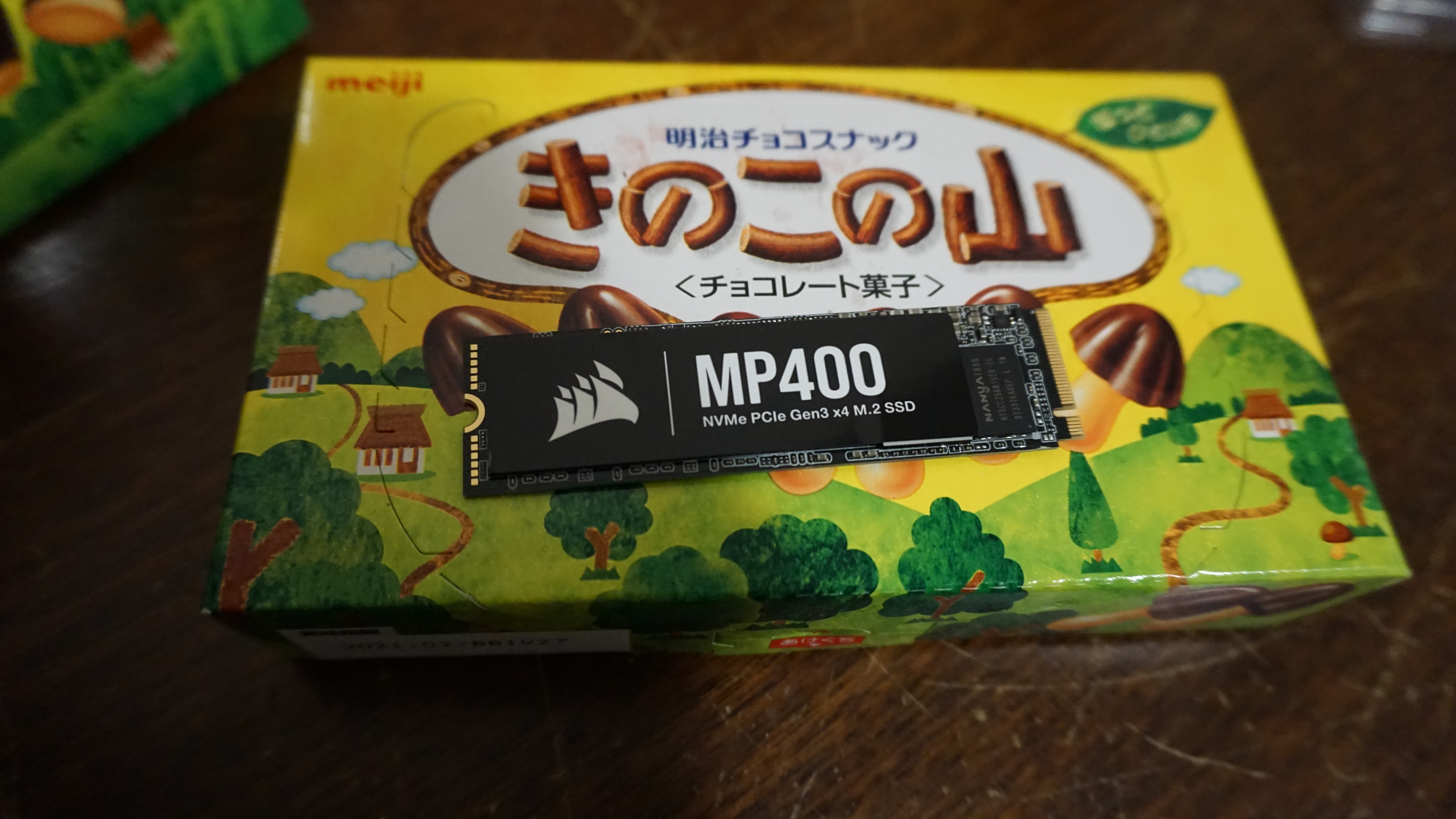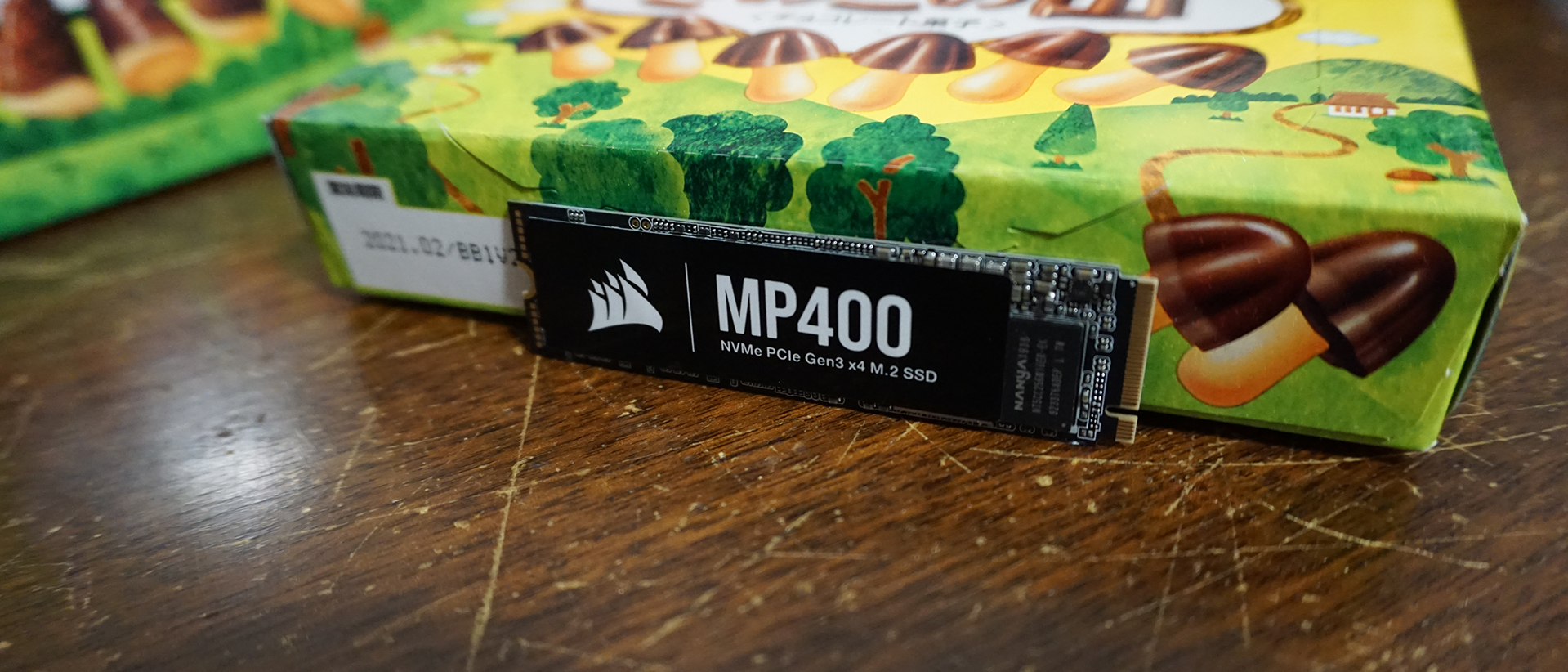TechRadar Verdict
The Corsair MP400 isn’t your average PCIe SSD. It’s fast for an SSD on the PCIe 3.0 interface, and yet it’s priced more like an affordable SATA drive. It seems the only trade off is the QLC NAND, which slightly limits its endurance.
Pros
- +
Competitive price
- +
Exceptional speed
- +
Large capacity
Cons
- -
Lower endurance
- -
Value dropoff at higher capacity
Why you can trust TechRadar
This is the system we used to test the Corsair MP400
CPU: AMD Ryzen 5 3600X
CPU Cooler: AMD Wraith Spire
RAM: 32GB T-Force Vulcan Z CL18 @3,600MHz
Motherboard: MSI B550 Pro VDH Wi-Fi
Graphics card: EVGA GeForce RTX 2070 XC Gaming
OS SSD: Samsung 980 Pro @ 500GB
Power Supply: Thermaltake Toughpower GF1 750W
Case: ThermalTake Core V21
Fast M.2 PCIe SSDs are becoming a bit more mainstream as high-speed flash memory becomes more affordable, and that commoditization leads to gems like the Corsair MP400. This SSD delivers some serious speed and capacity at relatively compelling prices. We tested the $254 (£240, AU$419) 2TB model, though there are also 1TB, 4TB and even 8TB models.
The Corsair MP400 we tested verges on the pricing of SATA SSDs. This drive is barely more expensive than the $249 (£189, AU$279) 2TB Samsung 870 QVO SSD, but it doesn’t have the speed limit of the SATA interface.
What helps the Corsair MP400 offer such an affordable price is the QLC NAND flash memory. QLC drives are cheaper than those featuring TLC at the same capacities, because QLC can store more bits per cell. This price and cost advantage comes at the cost of durability. QLC NAND models often can’t be written to as many times before the warranty expires. For example, the Samsung 860 Evo is rated for 1,200 TBW (terabytes written). Meanwhile, the Corsair MP400 is only rated to hold up to 400 TBW.

Here’s how the Corsair MP400 performed in our suite of benchmark tests:
CrystalDiskMark Sequential: 3,460.62MB/s (read); 3,063.75MB/s (write)
CrystalDiskMark Random Q32: 1,541.91 MB/s (read); 2,487.69MB/s (write)
10GB file transfer: 5.51 seconds
10GB folder transfer: 6.33 seconds
PCMark10 SSD: 1,303 points
400 TBW isn’t much of a shortcoming for general use, though you may not want to use it as a scratch disk for 8K video workflows or anything taxing like that. It’s almost too bad, because one thing this drive has going for it is speed. That said, this would make an excellent drive to fit inside a gaming rig as capacious and fast storage for a game library, since that entails far more reading from the drive than it does writing to it.
Though this is an affordable PCIe drive, it competes with some of the best in the business. In our testing, the Corsair MP400 delivers sequential read and write speeds as fast as or faster than just about any other PCIe 3.0 SSD we’ve tested, including the Samsung 970 Pro and Evo Plus and WD Black SN750. It’s random speeds are also thoroughly impressive, hitting 1,541MB/s in random reads and a simply absurd 2,487MB/s in random writes – that’s verging on the write speeds we’ve seen on PCIe 4.0 SSDs.
If storage and value are your priorities, you can’t do much better than this drive. As long as you’ve got a PCIe slot for it, the slight price increase of this drive over a SATA drive is more than justified by the huge speed increase.
SK Hynix’s Gold P31 drive offers some competition (at least when it’s on sale), as it offers all-around higher speeds at a lower price per gigabyte. But, it only comes in 500GB and 1TB capacities. Since the 1TB drive has recently been just $134 (about £100, AU$175), it offers better value, but that isn’t the case if the drive reverts to its original price of $224 (about £165, AU$295)

Buy it if…
You want a fast game library
If you want your PC games to load as fast as possible, the Corsair MP400 is a great drive to go for thanks to its speeds and space. It may not offer the speeds of a PCIe 4.0 drives, but it’s about as fast as we’ve seen PCIe 3.0 SSDs get, and it has a great price for the amount of storage you get.
You don’t have a PCIe 4.0 slot
There are faster drives out there if you have the motherboard and processor to support them. But, if you don’t, then you should be just fine with the Corsair MP400. It’s incredibly fast, and it’s a great value, especially compared to buying a PCIe 4.0 drive just to bottleneck in a PCIe 3.0 slot.
You’re a value-focused builder
There’s no getting around the serious value of the Corsair MP400. In particular, the 2TB model offers a bunch of storage at the kind of prices we’d expect from a SATA SSD, but it’s actually a PCIe SSD and it has the speeds to prove it. Better yet, it’s even faster than a lot of its PCIe SSD competitors.
Don’t buy it if…
You need to write a lot of data regularly
Unfortunately, because the Corsair MP400 uses QLC NAND, it doesn’t have the most impressive durability. It’s rated for 400 TBW, or 200 drive-writes. So, if you’re constantly dumping massive files onto your drive, you might run through this drive. Maybe it won’t fail at 400 TBW, but do you want to take that chance on 2TB of data?
You want the fastest drive
Don’t get it twisted, this is a fast drive, but it’s no PCIe 4.0 SSD. For the most part, it’s speeds pale in comparison to the numbers the latest generation of SSDs can put up when they’re slotted into a PCIe 4.0 x4 slot. For the most speed, the Samsung 980 Pro is where you should look.
You want something flashy
We know, Corsair’s gear usually has some serious flair to it. Corsair makes RAM modules that bring the razzle dazzle, and the company’s cases and gaming peripherals rarely lack RGB. But, Corsair probably knew this SSD was going to live halfway underneath your graphics card, so it’s pretty plain, all-black looks.
Over the last several years, Mark has been tasked as a writer, an editor, and a manager, interacting with published content from all angles. He is intimately familiar with the editorial process from the inception of an article idea, through the iterative process, past publishing, and down the road into performance analysis.

